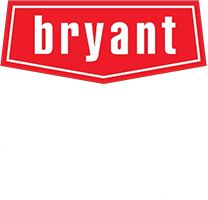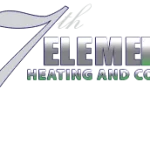Creating a Healthier, Cleaner Home Environment Starts with the Air You Breathe
Your home is your sanctuary, a place of comfort and safety for you and your family. But have you ever considered the quality of the air inside your walls? According to the U.S. Environmental Protection Agency, indoor air can be two to five times more polluted than the air outside. Everyday activities and items can release a surprising amount of contaminants—from dust, pet dander, and pollen to invisible threats like viruses, bacteria, and chemical vapors called Volatile Organic Compounds (VOCs). These pollutants can impact everything from allergy symptoms to overall respiratory health. For health-conscious families in Caldwell, investing in an indoor air purification system offers a comprehensive way to ensure the air throughout your entire home is consistently fresh, clean, and healthy.
What Is a Whole-Home Air Purification System?
Unlike portable units designed to clean a single room, a whole-home air purifier is a powerful system integrated directly into your existing HVAC equipment. Every time your furnace or air conditioner runs, it pulls air from your home, passes it through the purification unit, and then circulates clean, filtered air back through your ductwork to every single room. This seamless process provides a constant defense against airborne particles, germs, and odors without any bulky equipment taking up space or making noise in your living areas.
This approach ensures consistent air quality from the bedroom to the living room, helping to create a healthier environment for everyone, especially children, the elderly, and those with allergies or asthma.
Understanding Common Indoor Air Pollutants
The air inside your home can contain a mixture of pollutants from various sources. Knowing what you’re up against is the first step toward clearing the air.
Particulates
These are tiny solid particles floating in the air. Common examples include dust mites, pollen that enters from outside, pet dander, and mold spores. These are often the primary triggers for allergy and asthma flare-ups.
Biological Contaminants
This category includes airborne bacteria and viruses. These germs can circulate easily through an HVAC system, increasing the risk of illness spreading among family members, especially during cold and flu season.
VOCs and Odors
Volatile Organic Compounds (VOCs) are gases emitted from common household products like cleaning supplies, paint, new furniture, and even air fresheners. They can cause headaches and irritation, while other unwanted smells from cooking or pets can linger and affect your home’s comfort.
Choosing the Right Air Purification Technology
Different technologies target different pollutants. A professional can help you choose the right system or combination of systems for your home’s specific needs. Here’s a breakdown of the most effective options:
| Technology | Best For | How It Works |
|---|---|---|
| High-Efficiency Media Filters | Allergens, Dust, Pollen, Pet Dander | These advanced filters (rated by MERV) physically trap up to 99% of airborne particles as small as 0.3 microns, providing significant relief for allergy sufferers. |
| UV Germicidal Lights | Bacteria, Viruses, Mold Spores | UV-C light is installed inside your ductwork to neutralize and destroy microorganisms as they pass by, preventing them from reproducing and circulating. |
| Activated Carbon Filters | Odors, VOCs, Chemical Fumes | These filters use activated carbon to absorb odors and chemical vapors from cooking, pets, and household products, leaving your air smelling fresher. |
| Whole-House Humidifiers | Overall Comfort, Dry Air Relief | While not a purifier, controlling humidity is vital for air quality. A humidifier adds moisture to combat Idaho’s dry winters, reducing dry sinuses and static electricity. |
Did You Know?
- ✓ Whole-home air purifiers can help your HVAC system run more efficiently by preventing dust and debris from building up on sensitive components.
- ✓ Certain systems are certified as “asthma & allergy friendly®” by the Asthma and Allergy Foundation of America®.
- ✓ Unlike noisy portable units, whole-home systems operate silently within your ductwork, so you only notice the fresh air, not the system itself.
An Ideal Solution for Caldwell’s Air Quality Challenges
Living in Caldwell and the greater Treasure Valley means dealing with unique environmental factors. During dry summers, dust and agricultural particulates are common. Seasonal grass, weed, and tree pollens from sagebrush, juniper, and ragweed affect allergy sufferers from spring through fall. Furthermore, smoke from regional wildfires is a growing concern, blanketing the area and sending harmful fine particles indoors.
A whole-home air purification system is particularly effective in our region. It provides a constant barrier against these external threats, ensuring that when you close your door, you’re creating a clean-air haven for your family. Whether you’re in Caldwell, Nampa, or Middleton, protecting your indoor environment is key to year-round health and comfort. Regular system checks through a maintenance plan can ensure your filters and purifiers are always working at peak performance.
Ready to Experience Cleaner Air in Your Home?
Your family’s health and comfort are too important to leave to chance. At 7th Element Heating and Cooling, we provide honest assessments and expert installations of top-tier indoor air quality solutions. Let us help you choose the perfect system for your home and budget.
Frequently Asked Questions
How much does a whole-home air purification system cost?
The cost varies depending on the type of technology you choose, the size of your home, and your existing HVAC system. We provide personalized, upfront estimates to find a solution that fits your budget and needs.
Will an air purifier eliminate my allergy symptoms?
While no system can guarantee a complete cure, a high-efficiency air purifier can dramatically reduce the airborne allergens in your home, which often leads to significant relief from symptoms like sneezing, congestion, and itchy eyes.
How often do I need to perform maintenance?
Maintenance depends on the system. Media filters typically need to be replaced every 6 to 12 months, while UV bulbs may last for a year or two. We cover all maintenance requirements during your consultation and offer plans to handle it for you.
Can this be a DIY installation?
No, whole-home systems require professional installation. They must be correctly integrated into your HVAC system’s ductwork and electrical wiring to ensure safety, efficiency, and effectiveness. A certified technician from 7th Element can handle the job correctly and safely.
Glossary of Terms
IAQ (Indoor Air Quality): A term referring to the air quality within and around buildings, especially as it relates to the health and comfort of occupants.
MERV (Minimum Efficiency Reporting Value): A rating scale from 1 to 16 that measures the effectiveness of an air filter. Higher MERV ratings mean the filter can capture smaller particles.
HEPA (High-Efficiency Particulate Air): A standard for air filters that are certified to trap 99.97% of particles that have a size of 0.3 micrometers.
UVGI (Ultraviolet Germicidal Irradiation): The use of UV-C light to inactivate or kill microorganisms like bacteria, viruses, and mold spores.
VOCs (Volatile Organic Compounds): Potentially harmful gases emitted from certain solids or liquids, including paints, cleaning supplies, and new furniture.

